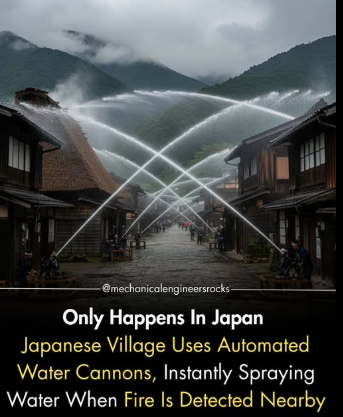Hydro Energy in Indonesia: Powering the Archipelago with Renewables
Indonesia, an archipelago nation blessed with abundant rainfall and diverse topography, possesses immense potential for hydro energy.
This clean, reliable source of electricity plays a crucial role in securing a sustainable future for the country. This article delves into the current state of hydro energy in Indonesia, exploring its potential, challenges, and prospects.
Current Status:
- Installed Capacity: As of 2022, Indonesia boasts a total installed hydro power capacity of 6,688.9 megawatts (MW), accounting for 53.3% of the nation’s total renewable energy capacity. This makes it the largest contributor among renewables, outpacing bioenergy, solar, and wind power.
- Energy Generation: Hydropower contributes approximately 7% of Indonesia’s overall electricity mix, generating around 20,000 GWh in 2020.
- Distribution: Hydropower plants are scattered across the archipelago, with significant concentrations in Sumatra, Java, and Kalimantan. Major projects include the Cirata (1,008 MW), PLTA Asahan 1 (645 MW), and PHEP Muara Tawar (947 MW) plants.
Untapped Potential:
- Estimated Potential: Studies suggest Indonesia possesses a theoretical hydro energy potential of 94,627 MW, distributed across over 52,566 sites. This implies a 14-fold increase over the current installed capacity.
- Run-of-River Systems: Much of this potential lies in run-of-river systems, smaller projects utilizing natural water flow without requiring large dams. These hold promise for decentralized energy generation in remote areas.
- Kayan Cascade Project: One example of large-scale potential is the Kayan Cascade Project in Kalimantan, projected to generate 9,100 MW upon completion. It aims to power the new capital city, Nusantara, with 80% renewable energy.
Challenges and Considerations:
- Environmental Impact: While considered clean, large-scale hydropower projects can disrupt ecosystems and displace communities. Careful environmental impact assessments and sustainable practices are crucial.
- Social Impact: Resettlement of communities affected by dam construction requires sensitive handling and long-term support. Social responsibility and community engagement are vital.
- Financing and Development: Investing in large-scale projects requires significant capital and can be complex. Public-private partnerships and innovative financing models are needed.
- Transmission Infrastructure: Expanding the transmission grid is essential to connect remote hydropower plants to population centers. Efficient grid development is crucial.
Prospects and Future Outlook
- Government’s Commitment: The Indonesian government aims to increase the share of renewables in the energy mix to 31% by 2050. Hydropower is expected to play a significant role in achieving this target.
- Focus on Mini-Hydropower: Development of mini-hydropower plants (below 10 MW) is gaining traction, providing clean energy access to remote communities and reducing reliance on fossil fuels.
- Technological Advancements: Advancements in hydro turbine technology and pumped storage solutions offer opportunities for improved efficiency and flexibility.
- Regional Cooperation: Collaborations with neighboring countries for cross-border hydropower projects can unlock further potential and enhance regional energy security.
Table: Major Hydropower Plants in Indonesia:
| Plant Name | Installed Capacity (MW) | Location | Year Commissioned |
|---|---|---|---|
| Cirata | 1,008 | West Java | 1987 |
| PLTA Asahan 1 | 645 | North Sumatra | 1982 |
| PHEP Muara Tawar | 947 | East Kalimantan | 2019 |
| Saguling | 510 | West Java | 1985 |
| PLTA Paiton | 330 | East Java | 1989 |
| Singkarak | 75 | West Sumatra | 2008 |
| PHEP Sutami | 510 | South Sulawesi | 2014 |
Conclusion:
Hydro energy offers a reliable and clean source of power for Indonesia’s growing energy needs. While challenges exist, concerted efforts towards sustainable development, community engagement, and technological advancements can unlock the vast potential of this renewable resource. By harnessing the power of its flowing waters, Indonesia can pave the way for a brighter, greener future.
https://www.exaputra.com/2024/02/hydro-energy-in-indonesia-powering.html
Renewable Energy
Deer Hunters and Gun Deaths
A couple of points:
Actually, there are 11.4 million deer hunters, 4.6 million use archery and 6.8 million use guns. It just takes a second to look this up, and doing so prevents one from spreading malicious lies.
Hunters don’t use not assault weapons, which are almost always chosen by mass murderers. No one with any sense objects to rifles being sold to hunters.
Renewable Energy
With Trump, It Gets Worse by the Day
With each passing day, Trump’s rhetoric reveals to an even greater degree his cruelty, his vindictiveness, and most of all, his lack of understanding of the U.S. Constitution. The only thing he has on his side is his capacity to mirror the hate and ignorance of his MAGA base.
We used to be proud of our country.
Renewable Energy
How Japan (Doesn’t) Fight Fires
 I’ve been to Japan. They’re sharp people.
I’ve been to Japan. They’re sharp people.
At the very least, they don’t have people stupid enough to indiscriminately shoot water all over a village because of a kitchen fire.
-
Climate Change3 months ago
Guest post: Why China is still building new coal – and when it might stop
-
Greenhouse Gases3 months ago
Guest post: Why China is still building new coal – and when it might stop
-
Climate Change2 years ago
Spanish-language misinformation on renewable energy spreads online, report shows
-

 Greenhouse Gases1 year ago
Greenhouse Gases1 year ago嘉宾来稿:满足中国增长的用电需求 光伏加储能“比新建煤电更实惠”
-
Climate Change Videos2 years ago
The toxic gas flares fuelling Nigeria’s climate change – BBC News
-

 Climate Change1 year ago
Climate Change1 year ago嘉宾来稿:满足中国增长的用电需求 光伏加储能“比新建煤电更实惠”
-

 Carbon Footprint2 years ago
Carbon Footprint2 years agoUS SEC’s Climate Disclosure Rules Spur Renewed Interest in Carbon Credits
-
Renewable Energy4 months ago
US Grid Strain, Possible Allete Sale











